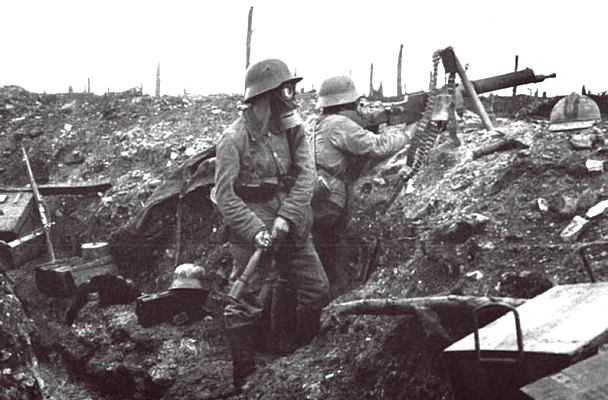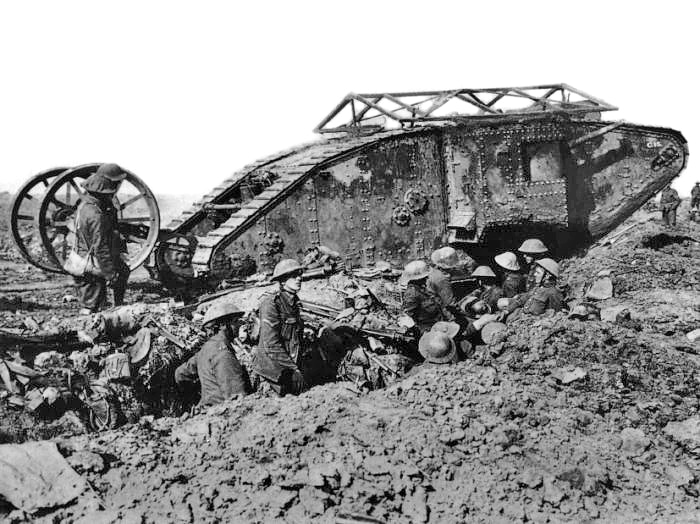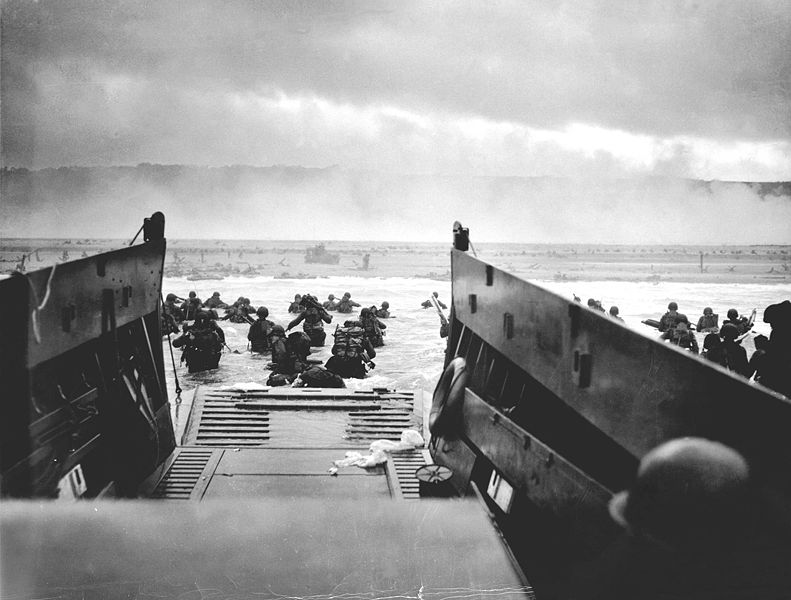
It’s probably happened to you before. In the midst of an in depth conversation on a manly topic (such as the great outdoors, history, literature, etc), someone looks to you for information that for whatever reason they assume you have. After all, you’re sporting that sweet new Art of Manliness T-shirt and spent half the evening talking nineteen to the dozen about how great the new AoM book is, so surely your man knowledge is up to par. More often than not, you end up having to dodge the question in an attempt to cover for your ignorance of the topic, or just sheepishly admit that you just don’t know. We here at Art of Manliness want to fill the gaps in your man knowledge, thus preventing such a social tragedy from occurring again in the future. In our new series Man Knowledge, we’ll catch you up on the basics of a given topic that we feel every man should be familiar with.
I believe that the more you know about the past, the better you are prepared for the future.
–Theodore Roosevelt
Historical topics seem the most likely candidates for a man knowledge refresher, since most boys often overlook the study of history while in school, only to spawn an interest in the topic later in life. In this first segment of Man Knowledge, we’ll be looking at some of the most important battles of the First and Second World Wars.

The Battle of Verdun
Date – February 21- December 18, 1916
Conflict – World War I
Participants – German Army vs French Army
Location – Verdun, France
Interesting Facts – Longest battle of WWI. One of the most devastating battles in human history. First recorded use of the flamethrower as a weapon (by German forces).
With the advent of trench warfare, achieving a clear cut victory on the battlefield became nearly impossible. In the past, two opposing armies had merely faced off against one another, and the victor was apparent when the opposing force either retreated or was overcome. In trench warfare, however, trenches and other fortifications slowed attackers significantly, which allowed defensive reinforcements time to arrive and strengthen the position, which very seldom allowed for attackers to make significant gains by capturing significant strategic positions. In early 1916, the German High Command sought to take advantage of the constant French reserve forces pouring into German offensives by attacking a point that the French forces would sacrifice every last man to protect. By attacking such a point, Germany created an opportunity to inflict massive casualties on French forces by forcing the French into a battle of attrition. The point of attack chosen by German High Command was Verdun, a city built within a loop of the Meuse River.
After a slow start, the German force broke through the main French defensive line, capturing over 10,000 prisoners. The initial onslaught of German artillery and manpower overwhelmed the French, and in several places the defensive lines collapsed as units broke rank and fled to the rear. Increasing the French woes was the fact that there was only one supply route in and out of the city, and it was utterly inadequate. French General Philippe Pétain immediately ordered the expansion of this route, drastically improving French supply lines. As the Germans continued their offensive, the tide began to turn in favor of the French, now well supplied thanks to their new supply line. When French General Robert Nivelle took command of French forces, the French took the offensive against the Germans for the first time. Although the Germans gained ground again at several points, they lost their overall momentum and were eventually driven out of the city. In the aftermath, casualties amounted to over 550,000 on the French side and 450,000 for Germany.

The Battle of the Somme
Date – July 1- November 18, 1916
Conflict – World War I
Participants – British and French Armies vs German Army
Location – Between the Somme and Ancre Rivers in France
Interesting Facts – One of the bloodiest battles in recorded history. Marked the debut of the tank on the battlefield. Among German troops on the defensive front was a young Corporal…Adolf Hitler
With Germany penetrating deep behind Allied lines and the Battle of Verdun well under way, it became apparent that the Allied forces needed to mount an attack on the Germans. By doing so, they would allow themselves the chance to recover lost ground, as well as potentially draw German reinforcements away from their offensive in Verdun. The Somme was a critical region for both sides, representing the German defensive front and lost ground that needed to be regained for the Allies. Retaking it would be no easy task, however. The German forces had long held control of the area, and had steadily been strengthening defensive armaments in the region. To complicate matters, the offensive would require an uphill assault through muddy, barbwire ridden trenches while the German defensive positions enjoyed a clear view from above.
Following several days of Allied artillery bombardment, Allied forces mounted their assault. The first day saw massive casualties for the allies, with nearly 60,000 men wounded or killed. The German defensive positions were clearly too strong to attack head on, and yet the assault continued. In the following weeks the Allied forces suffered unimaginable casualties while German forces remained relatively unscathed in comparison. Faced with the indisputable truth that if they pulled out here the devastation would only be worse in Verdun, the Allied command chose to continue the assault. It was not until the tank made its debut on the battlefield that Allied forces began to gain considerable ground. Initially catching unsuspecting German forces off guard, the tank rolled right over the barbwire and mud holes that had slowed ground troops, allowing the Allies to push into the German lines. The tanks were fraught with mechanical problems and were still prone to artillery fire, however, and were not enough to finish the job. Although the Allied forces failed to break the German defensive lines, they succeeded in pushing the German army back and out of the Somme region, as well as in taking some pressure off the forces in Verdun. Having sustained casualties of over 650,000, the German army never fully recovered from the assault.

The Battle of Britain
Date- July 10- October 30, 1940
Conflict- World War II
Participants- British Royal Air Force vs German Luftwaffe (Air Force)
Location- The skies over southern Britain
Interesting Facts- First major aerial battle in human history. First defeat of the German military under Hitler.
Following the fall of France to German forces in mid 1940, Hitler sought to end the war decisively. For the conquest of the Allied forces to be complete, the German High Command knew that the United Kingdom must be invaded. Thus, Hitler devised what became known as “Operation Sea Lion,†an amphibious invasion of the British Isles by German ground troops. Before such an operation could be mounted, however, British defensive positions and the RAF needed to be removed from the equation. Essentially, Hitler needed to own the skies of Britain before attempting to conquer the land below. With that in mind, he ordered the Luftwaffe to begin aerial raids of Great Britain.
What was to follow would later become immortalized as the first great aerial battle in human history, with the RAF employing nearly 2000 aircraft and nearly 2400 pilots in defense against the Luftwaffe’s staggering count of over 4000 aircraft involved in the battle. Initially, the German onslaught focused on coastal targets but eventually moved inland, conducting bombing raids on defenses and manufacturing facilities as the Luftwaffe fighters engaged the RAF in the skies above. The RAF sustained heavy damages early on, but managed to keep the Luftwaffe from seizing an early victory and all the while inflicting devastating losses on the German force as well. Frustrated with the loss of so many men and aircraft, the commander of the German air force, Hermann Göring, ordered a change in strategy. The Luftwaffe would now focus not on military and manufacturing targets, but on civilian targets in an effort to crush British morale. By mid-September, London was sustaining heavy damage as German bombs continuously bombarded all corners of the city indiscriminately. In spite of the devastation on the ground, this turn of events yielded positive results for the RAF. With the Luftwaffe occupied with bombing runs and less focused on aerial engagements, British pilots were able to move from defense to offense.
It soon became clear to German High Command that the conquering of the skies of Britain would not be as easily achieved as planned and Hitler conceded, cancelling Operation Sea Lion and effectively ending the Battle of Britain through the German withdrawal. The outcome is considered to be a decisive victory for the British forces.

The Battle of Stalingrad
Date- July 17, 1942 – February 2, 1943
Conflict- World War II
Participants- Predominantly the German Army vs Russian Army
Location- Stalingrad, Russia (Soviet Union)
Interesting Facts- Turning point of World War II. First major defeat of Hitler’s ground forces. The bloodiest battle in the history of warfare. The largest battle (by manpower) in human history.
With his armies marching over much of Europe, Hitler turned his eyes east to Russia with the initiation of Operation Barbarossa. Initially aiming to capture the Caucasus oil fields, Hitler eventually expanded the invasion to include the taking of Stalingrad. While Stalingrad did represent a reasonable strategic target, it is widely believed that Hitler was more influenced by the opportunity to seize a city named after his nemesis, Joseph Stalin. Also an incentive was the city’s large military manufacturing plants which supplied much of the Allied armored divisions.
The German Sixth Army soon arrived at the outskirts of Stalingrad. When the initial invasion did not overtake the city as quickly as expected, however, Hitler again changed strategy by ordering an aerial bombardment of the city which left Stalingrad reduced to rubble. Much to Hitler’s chagrin, the bombing did little to hamper the defensive capabilities of the Russian troops in the city, and the fighting continued. In a historic example of bad timing, the German forces had just begun to gain considerable control of the city when a bitter Russian winter set in. Ill equipped for such weather, German forces lost much of their momentum as both men and weapons froze in battle. Meanwhile, a large Russian force was massing outside the city, waiting to attack the largely undermanned and weather-worn German flanks. Bombarded by a lethal combination of the Russian army and Mother Nature, the German force suffered a decisive defeat. The battle had been the largest and bloodiest to date, leaving over 1.5 million men dead and wounded. The entire German Sixth Army was lost in the engagement, and the defeat signaled the end of Nazi domination in the war.

The Battle of Midway
Date- June 4-7, 1942
Conflict- World War II
Participants- Japanese Navy vs United States Navy
Location- Midway Atoll, Pacific Ocean
Interesting Facts- Most pivotal naval battle of World War II in the Pacific
In its surprise attack on Pearl Harbor, Japan had aimed to eradicate the U.S. Pacific Fleet. While the damage at Pearl was catastrophic, it soon became clear that although the U.S. Navy was deeply wounded, it was still in the fight. As if by a stroke of luck, not a single aircraft carrier sustained damage in the bombardment as they were all at sea at the time of the attack. Now, six months later, the Japanese hoped to finish the job.
The Japanese command sought to create a conflict the U.S. Pacific Command would be unable to avoid. The Midway Atoll, lying just 1150 miles from Hawaii, would be defended by the weakened American force at all cost and would therefore serve as the perfect trap to squash the American fleet. What the Japanese did not count on, however, were the intelligence operations being carried out by the U.S. which had decrypted coded messages, tipping off the Pacific Fleet regarding the ambush. Moving quickly, the U.S. Navy massed its forces at Midway in an attempt to gain the element of surprise. As the Japanese naval force steamed towards Midway, confident that it was about to set a trap for the Americans, they were unwittingly sailing right into an American trap instead.
With the springing of the trap, a fierce naval battle ensued. The larger Japanese force, including four of the six carriers which had months earlier bombarded Pearl Harbor, were caught off guard and was soundly beaten. All four Japanese carriers were sunk, in contrast to the loss of only one carrier by the American forces. The Japanese force failed to gain control of the Midway region, and with the loss of the majority of its carrier fleet, the Japanese Navy was never able to recover its full strength for the remainder of the war.

The Battle of Normandy
Date-June 6, 1944 – July 1944
Conflict- World War II
Participants- Allied Powers vs Germany
Location- Normandy, France
Interesting Facts- Largest amphibious invasion to date. First successful opposed landings across the English Channel in over 800 years. Allied casualties were so high that some armies had to create a new category to describe them: “Double Intense.”
With most of Europe still under Nazi control, Allied commanders sought to retake the continent. Supreme Allied Commander Dwight D. Eisenhower selected Normandy, France as the targeted landing point, and preparations began. While several factors played a role in the eventual Allied victory, manpower was the critical element. With over 1,000,000 men engaged in various parts of the invasion, the Allies outnumbered the German force by nearly three to one. Providing support for Allied troops were just under 7000 vessels and 12,000 aircraft.
Throughout the night before the invasion, paratroopers and gliders were dropped in behind the German defensive line. The beaches were bombarded by naval and air forces, although the onslaught did far less damage than had been hoped. Thus the landing force faced heavy resistance and substantial defensive fortifications along the beach and suffered substantial initial casualties. The struggle was mightiest on Omaha beach, a crescent shaped killing ground hemmed in by high, fortified bluffs. But with much persistence, lanes were opened on the beaches, and men and artillery were able to push inland. In the days that followed, the Allied forces established an offensive stronghold which allowed for substantial augmentation of their force, simultaneously pushing the German defensive line further inland. With the success of the Allied invasion, France was largely regained by Allied forces, and many consider this to be the beginning of the end of the war.


